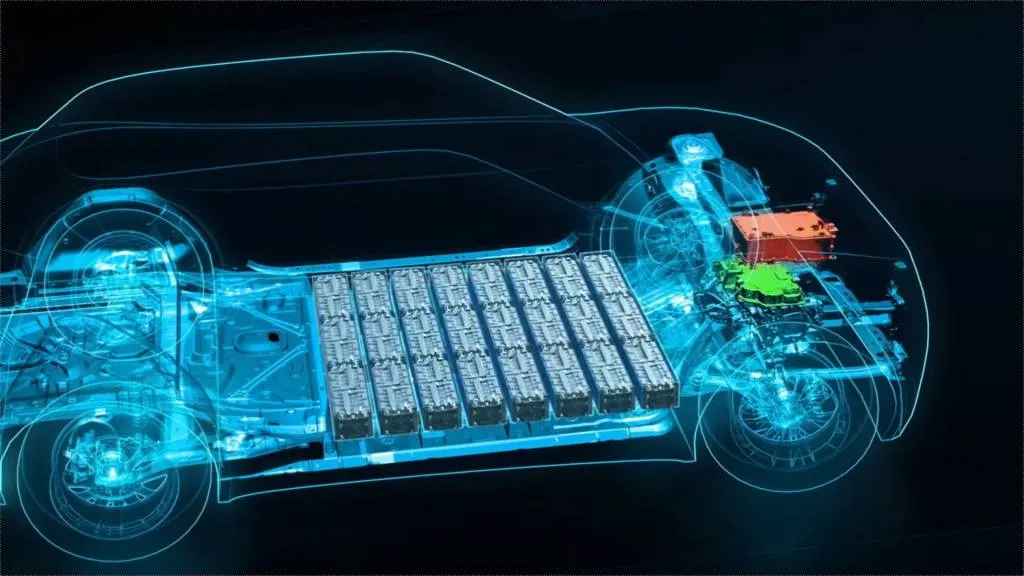Stellantis claims to have made significant progress in eliminating two major hardware components from EVs: the onboard charger and power inverter.
The solution doesn't get rid of them completely, but with a solution building them into electronic conversion cards as part of battery modules, they might no longer be separate heavy and space-consuming parts the automaker needs to procure as standalone items.
As spotted by Autoblog, the automaker has said a four-year research project with French battery company Saft and the French National Center for Scientific Research (CNRS) has yielded a prototype battery system that allows such packaging, freeing up space onboard and potentially improving efficiency.
The prototype isn't ready for commercialization, but Stellantis believes a similar hardware set could be ready for use in production EVs by 2030.

Stellantis rendering showing EV onboard charger and power inverter
An onboard charger and power inverter are two bulky but important components in modern EVs. The onboard charger takes AC power from a 120-volt Level 1 or 240-volt Level 2 connector (which, confusingly, is also referred to as a charger) and converts it to DC power that can then go into the battery pack (DC fast charging avoids this step, hence its faster speed). Motors run on AC, though, so they need an inverter to convert the DC power from the battery pack into the proper current.
Both components are large enough to erode some of the packaging flexibility touted by automakers as an advantage of electric powertrains. They're sometimes mounted under the hood, where an internal-combustion engine would normally be. And they can be sources of inefficiency: it's not unusual for onboard chargers to lose 12-14% of the energy inputted.
Alternatives to current onboard chargers and power inverters have been proposed by a couple of technology companies—most notably Hillcrest Energy Technologies and eLeap—although both of those examples drop the onboard charger in favor of a new kind of inverter. Stellantis' proposal, instead, repackages both components.
As Stellantis continues to develop its prototype into something potentially production-viable, Texas Instruments has announced that it plans to dramatically downsize onboard chargers. The company, once known for handheld calculators, in 2020 announced new transistors it claimed could double the power density of onboard chargers, making much smaller, lighter units possible.












